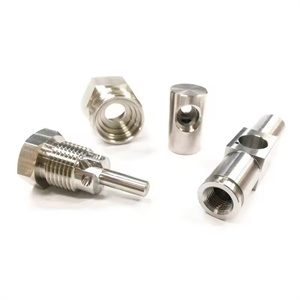Heat treatment of precision turned parts
The tempering process of precision turned parts requires precise control to ensure the performance and quality of the parts.
Tempering steps
preparation work
cleaning precision turned parts: ensure that the surface of the parts is clean and free of oil and other pollutants to reduce the impact on the tempering effect.
Inspect parts: check precision turned parts for cracks, defects, or damage to ensure that the parts are suitable for tempering treatment.
Set tempering temperature
select the appropriate tempering temperature based on the material and required performance of precision turned parts.
Low temperature tempering: 150-250 ℃, used to maintain the hardness and wear resistance of the parts.
Medium temperature tempering: 350-500 ℃, suitable for improving the elasticity and yield point of parts.
High temperature tempering: 500-650 ℃ (or adjusted according to specific materials), used to obtain better comprehensive mechanical properties.
Heating
place precision turned parts into the tempering furnace and adjust the furnace to evenly heat to the set tempering temperature.
Pay attention to controlling the heating speed to avoid excessive deformation or cracking of the parts.
Heat preservation
after the part reaches the set tempering temperature, it needs to be maintained for a period of time to ensure uniform internal temperature of the part.
The insulation time is determined by the material, thickness, and required performance of the parts. In general, the low-temperature tempering insulation time is 1-2 hours, and the intermediate and high-temperature tempering insulation time is calculated according to the formula t=ad+b (where d is the effective thickness of the part, a is the tempering coefficient, and b is the time base).
Cooling
after the insulation time is over, the parts need to gradually cool down.
The cooling method can be natural cooling, air cooling, or using other cooling media (such as water, oil, etc.).
The cooling speed should be moderate to avoid deformation or cracking of parts caused by too fast or too slow.
Performance testing
perform performance testing on precision turned parts after tempering, such as hardness testing, tensile testing, impact testing, etc., to ensure they meet design requirements.
